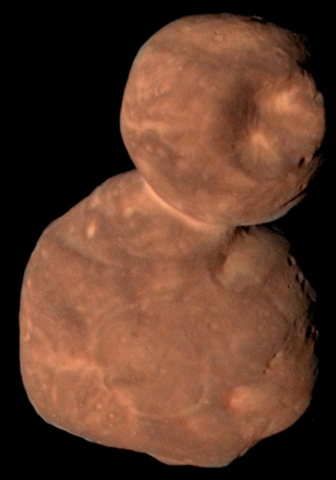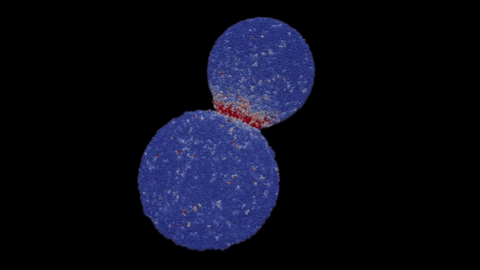NASA New Horizons Reveals Fascinating Details on Early Planetary Formation

Back at the beginning of 2019, NASA’s New Horizons spacecraft studied and passed a peculiar object in the Kuiper Belt, known as Arrokoth. At over a billion miles past Pluto, this passing marks Arrokoth as the most distant object in the universe ever visited by a spacecraft. Because of the incredible distance, NASA is just now receiving in-depth data from the probe about the fascinating, peanut-shaped object. The information they’re receiving, recently published in a series of papers in Science, is already quite informative and revolutionary—it’s changing what we know about planetary formation in our solar system.
Arrokoth and its Implications

Arrokoth is estimated to be around 4 billion years old, with a 16-hour day and 298-year solar system orbit. It consists of two “lobes” with a thin neck holding them together. The surfaces of both lobes are entirely red, with some variation between the two (the red color is believed to be caused by tholins, chemical compounds which are the cause of red coloration on Pluto and Titan).
The most distinguishing aspect of Arrokoth is its relatively unmarked surface—many objects that we’ve observed show signs of incredibly violent collisions with deep impact craters. Neither lobe has many prominent craters, indicating it has undergone much slower impacts over its lifespan. In fact, researchers believe the two portions were once separate objects, which eventually merged at an exceptionally slow speed—potentially as slow as the average human walking speed.

Arrokoth’s two lobes were likely formed over four billion years ago through microscopic particles sticking together to form larger chunks. Eventually, these chunks became “pebble-sized clouds” that continued to accumulate and become larger, with some larger objects joining. Because of this gentle formation, Arrokoth is in pristine condition, making it a perfect observable example of how some objects formed in the early universe. Not only does Arrokoth offer direct insight into the early stages of development in our solar system, but it also shows that these gently-formed objects merged entirely from local matter in its surrounding environment, rather than matter accumulated from various parts of the galaxy. As NASA points out, “an object like Arrokoth wouldn’t have formed, or look the way it does, in a more chaotic accretion environment. “
What’s Next on the Horizon for New Horizons?
The New Horizons probe, launched back in 2006, plans to continue traversing through the Kuiper Belt, looking for more fascinating objects to study. Its communication fuel is expected to run out around 2030 or so, but researchers intend to utilize it as long as possible. After providing detailed images and data about Pluto, and now incredible information about early planetary formation, New Horizons is bound to discover more on its deep-space journey.
References
Arrokoth Revealed: A First In-Depth Look at a Pristine World